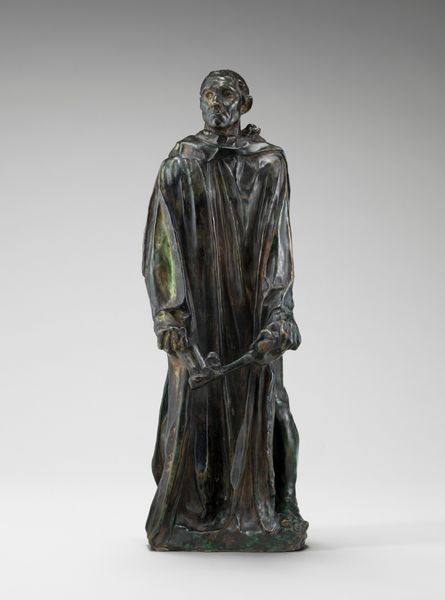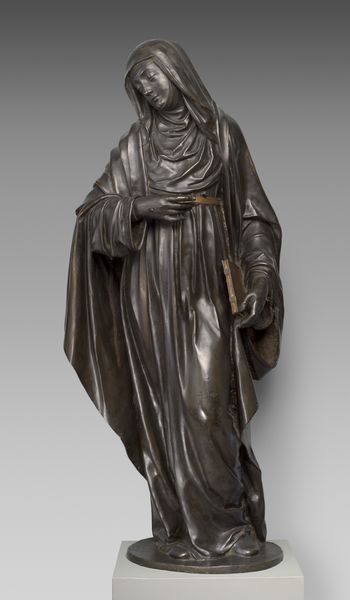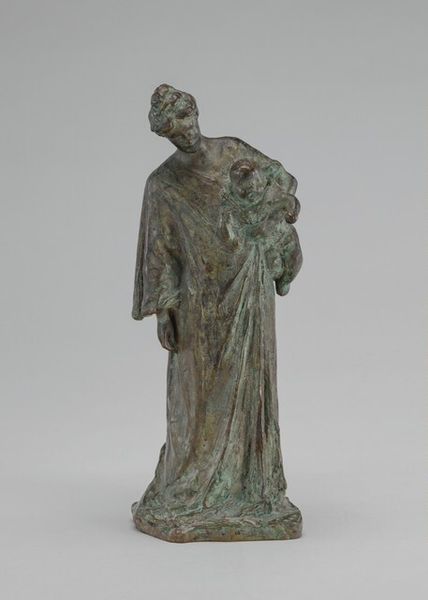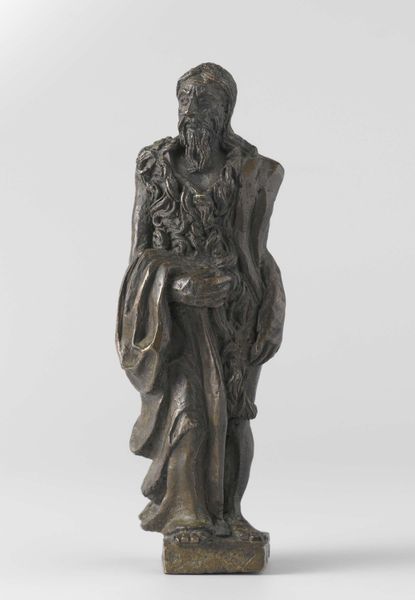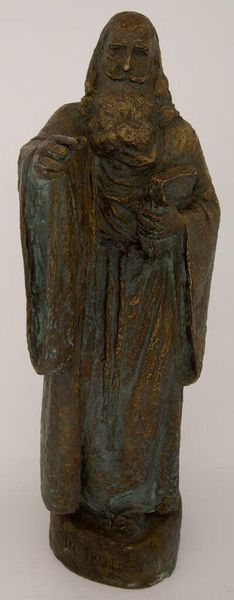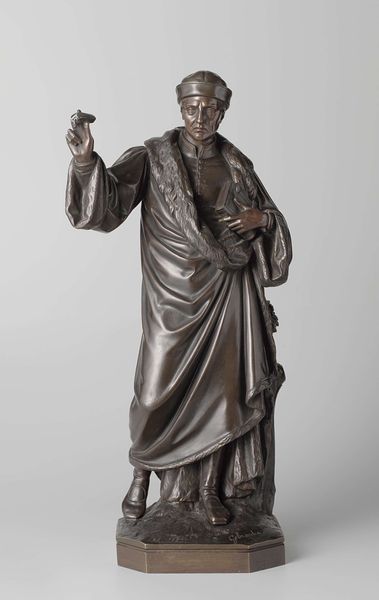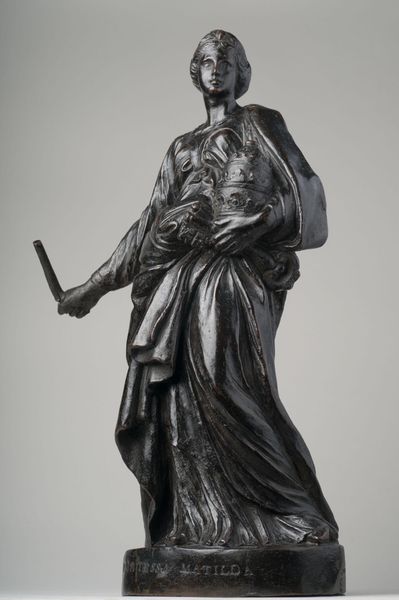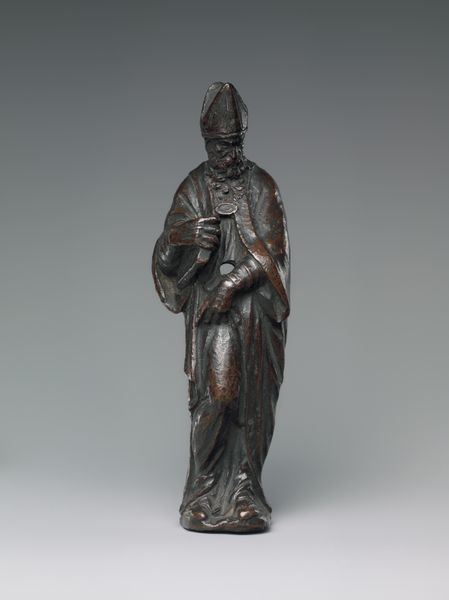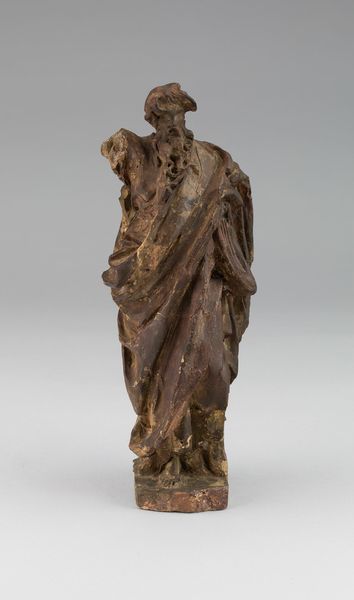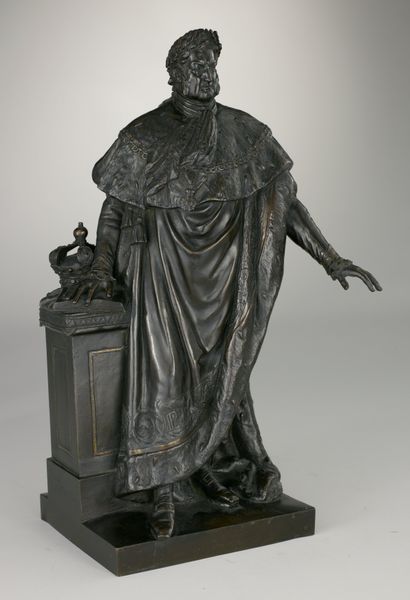
bronze, sculpture
#
portrait
#
narrative-art
#
sculpture
#
bronze
#
figuration
#
sculpture
#
history-painting
#
post-impressionism
#
academic-art
#
post-impressionism
Dimensions: 208.3 × 66 cm (82 × 26 in.)
Copyright: Public Domain
Editor: This is Auguste Rodin's bronze sculpture, *A Burgher of Calais (Jean d'Aire)*, likely from 1889, residing at the Art Institute of Chicago. I find his expression incredibly moving. What stands out to you in this piece? Curator: What I see is a powerful meditation on public service and sacrifice. Rodin wasn’t simply depicting an individual, Jean d'Aire, but evoking a pivotal moment in French history during the Hundred Years’ War, a story freighted with national identity. What do you know of the history that inspired this work? Editor: I remember reading about the Siege of Calais... Wasn’t it about these citizens offering themselves to the English king to save their city? Curator: Exactly! Rodin depicts Jean d'Aire and five other burghers, prepared for execution. Now, consider the politics of imagery at play here. This wasn't commissioned as a triumphant monument. Instead, it captures vulnerability, hesitation even. How does that contrast with traditional war memorials of the time? Editor: Those typically glorify heroic victories, but this… it humanizes the cost of war, the psychological burden carried by these men. It challenges the idea of patriotism being purely about aggression and domination. Curator: Precisely! And Rodin intended for the sculptures to be placed at ground level, forcing the public to confront these figures directly, to grapple with the complexities of civic duty. How does this affect your experience of the piece? Editor: It definitely creates a sense of intimacy, a connection to their suffering that's really immediate. Seeing them on a pedestal would create emotional distance, almost turning them into untouchable heroes, whereas now it feels like they are fellow men. I hadn't considered the positioning so important. Curator: Museums and public spaces contribute crucially to our understanding of Art History, wouldn't you agree? Editor: Absolutely. I see how crucial historical and socio-political forces shape our perspective and make these stories far more complex and relevant than I previously realized.
Comments
No comments
Be the first to comment and join the conversation on the ultimate creative platform.
